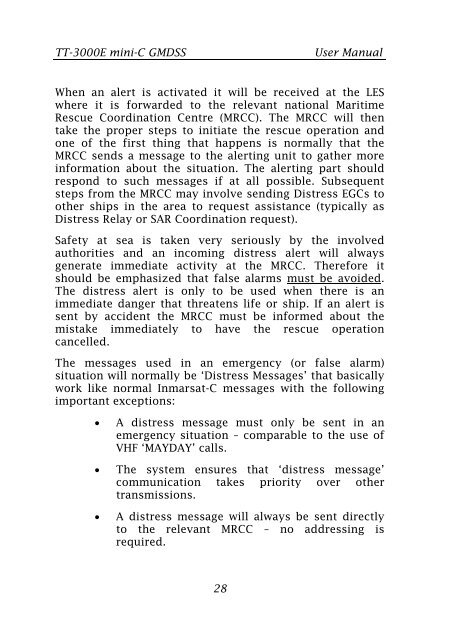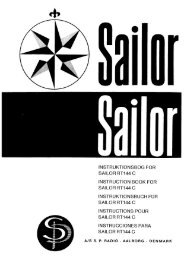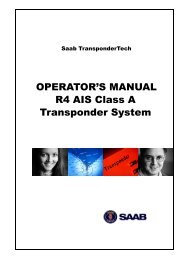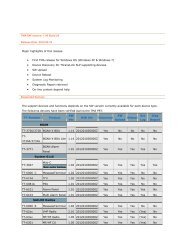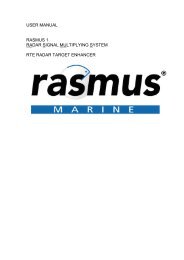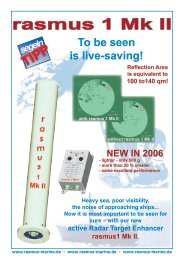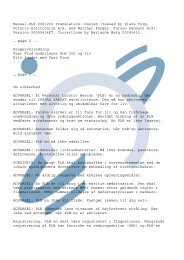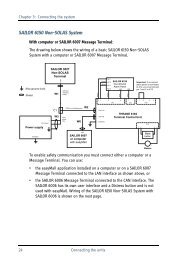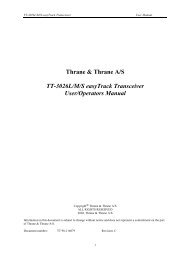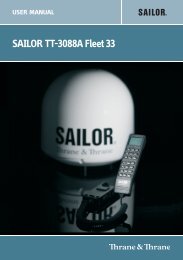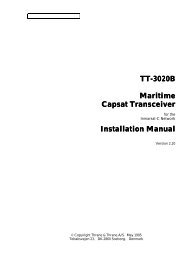TT-3000E mini-C GMDSS User Manual - Polaris-as.dk
TT-3000E mini-C GMDSS User Manual - Polaris-as.dk
TT-3000E mini-C GMDSS User Manual - Polaris-as.dk
Create successful ePaper yourself
Turn your PDF publications into a flip-book with our unique Google optimized e-Paper software.
<strong>TT</strong>-<strong>3000E</strong> <strong>mini</strong>-C <strong>GMDSS</strong> <strong>User</strong> <strong>Manual</strong><br />
When an alert is activated it will be received at the LES<br />
where it is forwarded to the relevant national Maritime<br />
Rescue Coordination Centre (MRCC). The MRCC will then<br />
take the proper steps to initiate the rescue operation and<br />
one of the first thing that happens is normally that the<br />
MRCC sends a message to the alerting unit to gather more<br />
information about the situation. The alerting part should<br />
respond to such messages if at all possible. Subsequent<br />
steps from the MRCC may involve sending Distress EGCs to<br />
other ships in the area to request <strong>as</strong>sistance (typically <strong>as</strong><br />
Distress Relay or SAR Coordination request).<br />
Safety at sea is taken very seriously by the involved<br />
authorities and an incoming distress alert will always<br />
generate immediate activity at the MRCC. Therefore it<br />
should be emph<strong>as</strong>ized that false alarms must be avoided.<br />
The distress alert is only to be used when there is an<br />
immediate danger that threatens life or ship. If an alert is<br />
sent by accident the MRCC must be informed about the<br />
mistake immediately to have the rescue operation<br />
cancelled.<br />
The messages used in an emergency (or false alarm)<br />
situation will normally be ‘Distress Messages’ that b<strong>as</strong>ically<br />
work like normal Inmarsat-C messages with the following<br />
important exceptions:<br />
• A distress message must only be sent in an<br />
emergency situation – comparable to the use of<br />
VHF ‘MAYDAY’ calls.<br />
• The system ensures that ‘distress message’<br />
communication takes priority over other<br />
transmissions.<br />
• A distress message will always be sent directly<br />
to the relevant MRCC – no addressing is<br />
required.<br />
28


